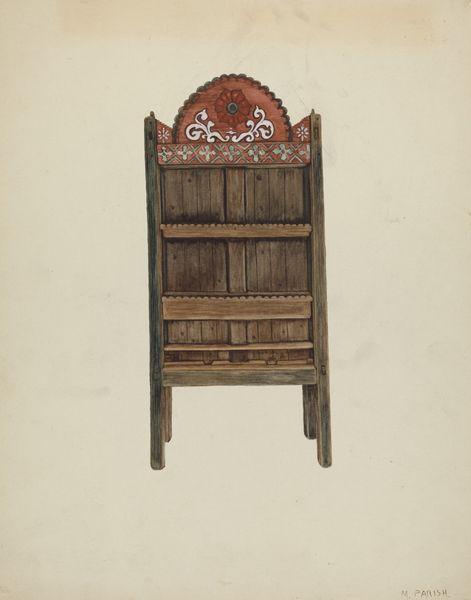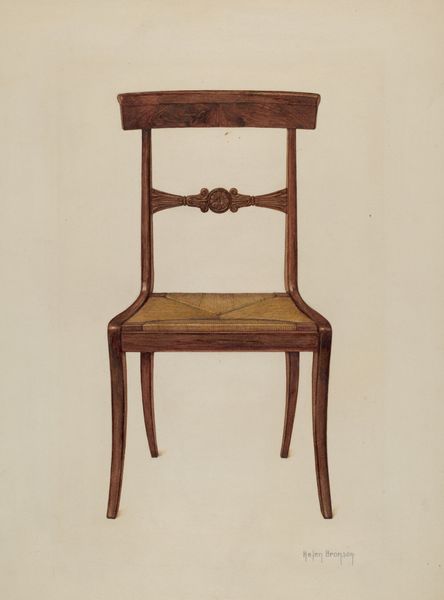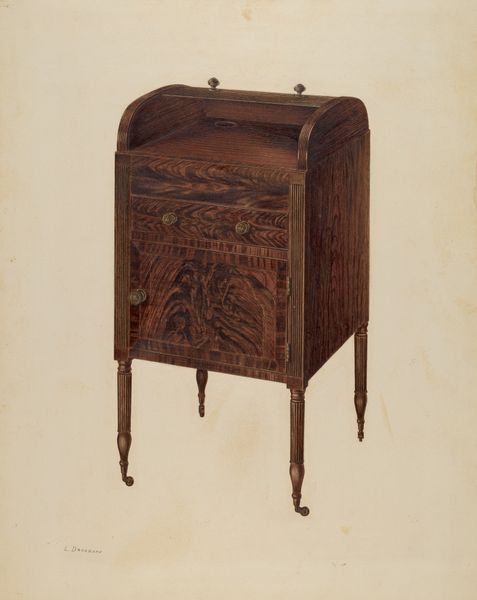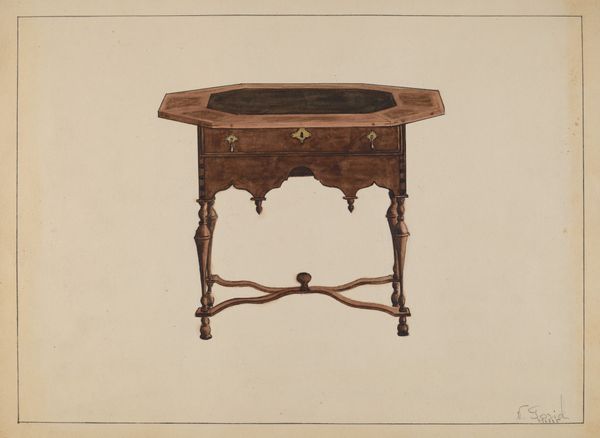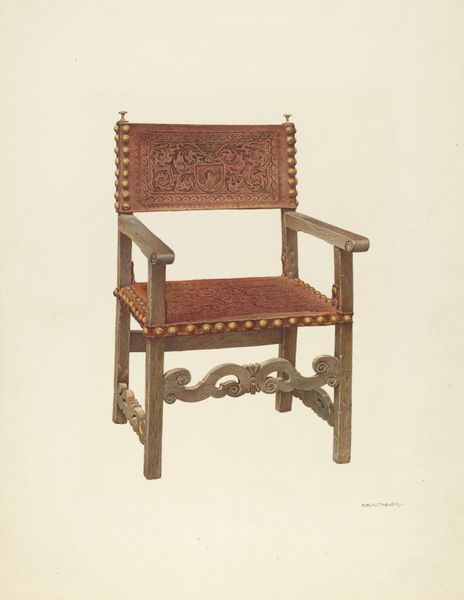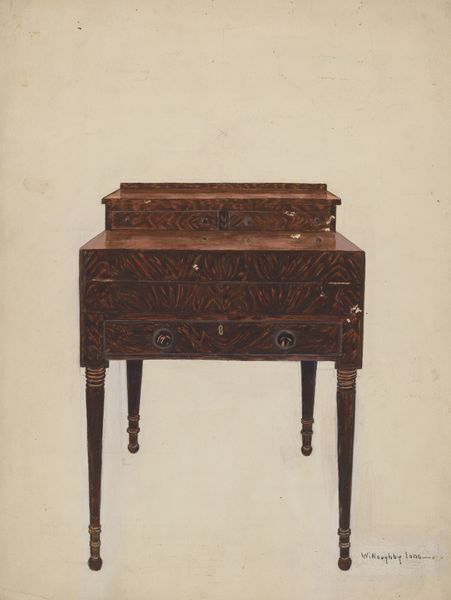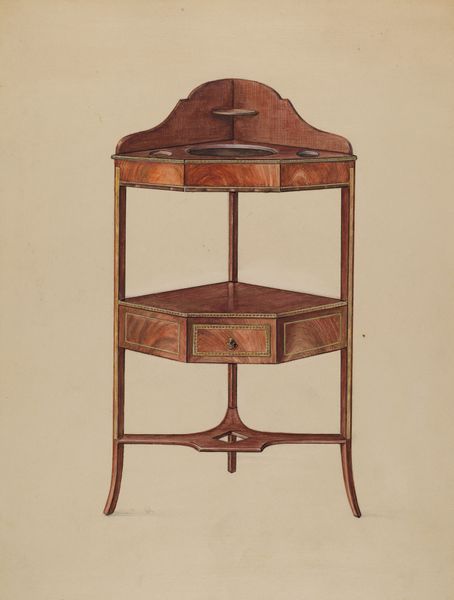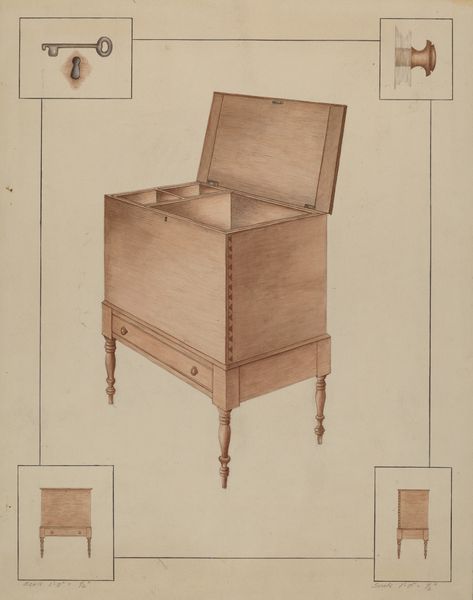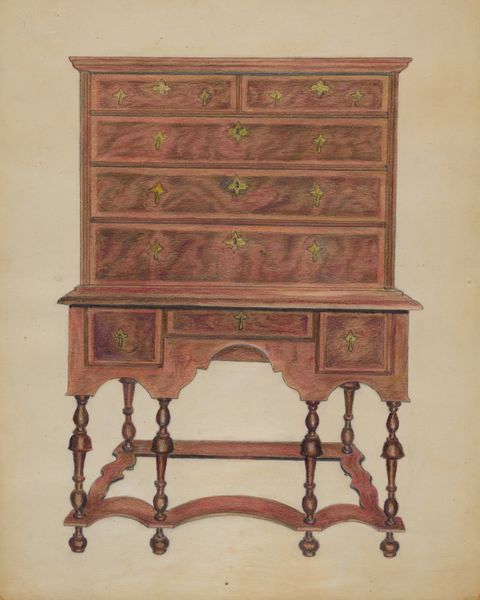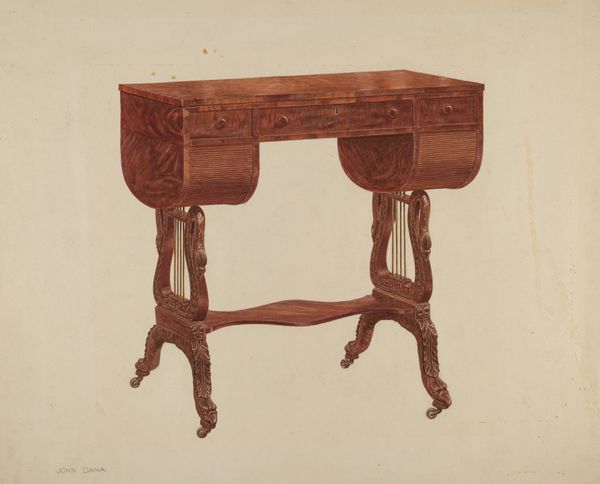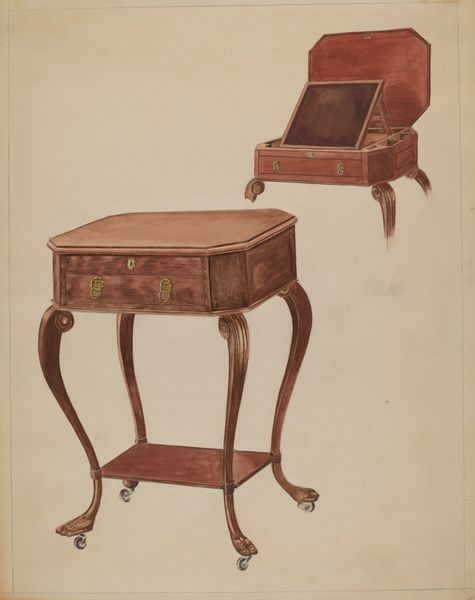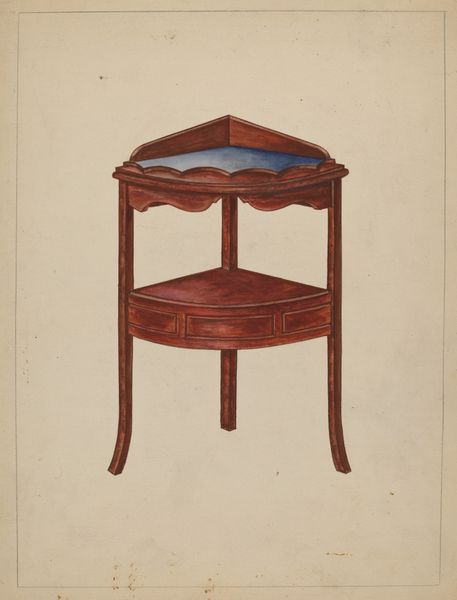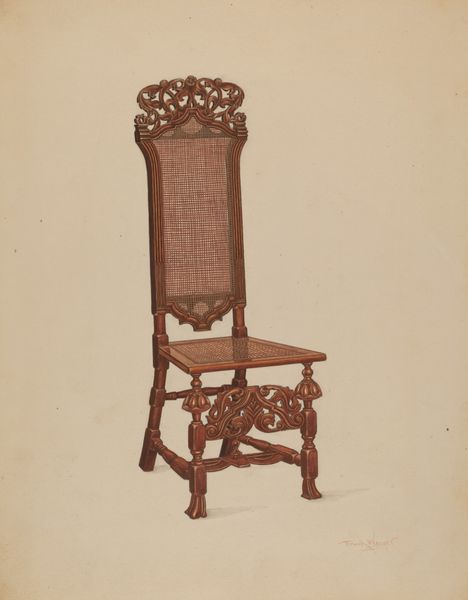
drawing, paper, pencil, wood
#
drawing
#
sculpture
#
furniture
#
charcoal drawing
#
paper
#
pencil
#
wood
#
academic-art
#
charcoal
Dimensions: overall: 36.7 x 29.2 cm (14 7/16 x 11 1/2 in.) Original IAD Object: 23 1/2" high; 33" in diameter
Copyright: National Gallery of Art: CC0 1.0
Editor: Here we have Margery Parish’s "Spanish Southwest Hutch Table" from around 1939, rendered with pencil, charcoal and perhaps some colored pencil on paper. I’m really drawn to the almost technical drawing-like quality, combined with the whimsical ornamentation. What does this piece evoke for you? Curator: Well, for me, this image immediately sparks questions about the role of craft and cultural identity during that period. The "Spanish Southwest" designation is crucial; it speaks to a romanticized, and often appropriated, vision of Southwestern culture popular in the US, especially during the 1930s with the rise of tourism and regionalism. Editor: So, you're saying it's not necessarily an authentic representation of Southwestern craftsmanship? Curator: Exactly. The image highlights how regional aesthetics became commodities, shaped by external perceptions and market demands. The meticulous rendering suggests a desire to document or even preserve a specific idea of Southwestern identity. What do you think about the choice to present this furniture as a drawing rather than a photograph, given its almost technical quality? Editor: That's interesting. Maybe the drawing medium gives Parish more control over the narrative, allowing her to emphasize certain features or even idealize the furniture in a way that a photograph couldn’t. Curator: Precisely. It's about crafting a specific visual story, reinforcing particular values linked to the Spanish Southwest. What values do you see expressed through this piece? Editor: A sort of rustic simplicity, perhaps, blended with decorative elements. It’s thought-provoking to consider the image as part of a broader cultural phenomenon, rather than just an isolated artwork. Curator: I agree. By exploring the cultural context of this drawing, we can understand the intricate relationships between art, identity, and the marketplace in shaping public perceptions. It’s not just a drawing of furniture; it’s a cultural statement.
Comments
No comments
Be the first to comment and join the conversation on the ultimate creative platform.
